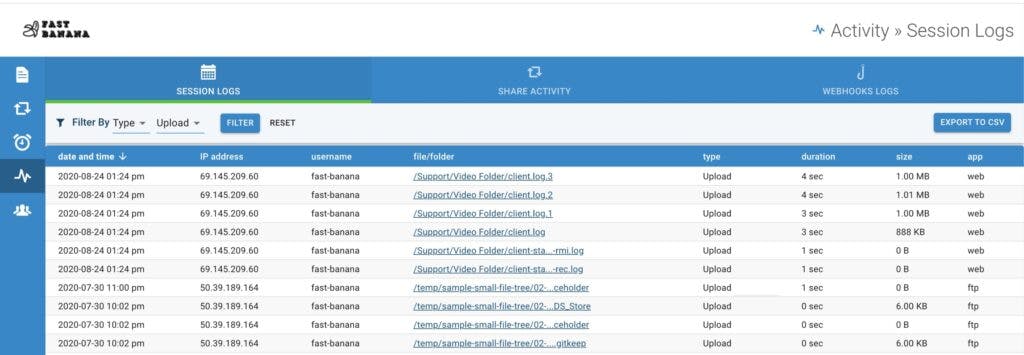
ExaVault is now part of Files.com Family
We’re merging with Files.com to create the world’s largest company focused exclusively on cloud native SaaS Managed File Transfer. Read More
This month we’re talking about recent performance improvements and looking at some of the differences between send, share and receive. Plus, if you’d like an overview of the ports used by FTP, FTP-S and SFTP, we have a recent blog on the topic.
As you may have noticed, ExaVault has occasionally suffered from slower performance over the last few months. We’re growing quickly, and certain parts of our infrastructure have been under unusually high load. Activity logs and webhooks, in particular, have been affected, but file operations and other parts of the application have been intermittently slow as well.
We’re very sorry about these issues, but we do have some good news to share. Over the last three weeks, we’ve provisioned additional infrastructure and made software changes to better balance our workloads, which means speed has improved considerably. We’re working now to improve our webhooks’ speed, and we anticipate further announcements there in the next few months.
Thank you for continuing to support us during this period of high growth.

ExaVault has several ways for you to share files, and it’s quite simple once you know the options. To decide which approach is right for you, we have a short overview to provide the best file transfer option for different situations.
If you see a situation that pertains to your business, click the linked topic to find out more.
1. Are you looking to simple send a link one time that provides access to a file or folder?
Send files directly is the simplest option.
2. Do you need to share content with several users that may change frequently?
Create a shared folder to provide multiple users with access to the same files.
3. Do you need users to submit files to you without providing them with a separate login/password?
You can create a receive folder to collect file submissions.
4. Do you need to include a way for users to upload files to your ExaVault account through a form on your website?
Embed the receive folder into a form on your site.
5. Someone needs access to files. Is that individual a member of your staff, or do they require access via SFTP or FTP?
Then you’ll want to create a user account.
Successful file transfers can only happen when the correct ports are open. Are you aware of which ports are needed for FTP and other protocols to transfer your files? Our recent blog post goes over port numbers and FTP, FTP-S and SFTP file transfer protocols — FTP Port: File Transfer and Port Numbers.


We’re merging with Files.com to create the world’s largest company focused exclusively on cloud native SaaS Managed File Transfer. Read More

ExaVault Cloud FTP completes 2021 with huge success and accolades from Gartner Digital Markets brands driven by amazing user reviews. Read More